Theatre and CinemaThe beginnings of the Argentine theatre included "gauchescos" (countrymen) themes in the plays. Pieces like "Juan Moreira", “Juan Cuello” and "Hormiga Negra" were successful in Buenos Aires as it approached the year 1900. But there were also plays about life in urban society. Enrique García Velloso marked a whole period of Argentine drama with plays like "Jesús Nazareno," "Fuego Fatuo," "Gualicho" and "Un cura en reposo" (“A resting priest”).Roberto J. Payró appeared in the same period as the creator of the "creole theatre", a style of theatre with marked social contents. Florencio Sánchez imposed his passion on spectators with plays like "M'hijo el Dotor" (“My Son, the Doctor”) and "La Gringa" (“The foreigner”). Gregorio de Laferrere gave to that period his refined social satire and innovative spirit. Comedies like "Jettatore" (“Luckless”) and "Las de Barranco" (“Those from Downhill”) are two classic plays that still continue to impress audiences.There was no reason why high quality plays should not be enjoyed by today’s audiences. For this reason, authors such as Belisario Roldan, Iglesias Paz, Hicken and Pérez Petit, Sánchez Gardel, Roberto Cayol, and Benito Lynch have been continually performed.That rich vein of drama and comedy writings still continues with Defilippis Novoa, Damel, Darthes, Rodríguez Acassuso, Mendizábal, Griselda Gambaro, Sergio de Cecco, Ariel Bufano, Carlos Gandolfo, Oscar Viale among others.New authors have attempted new ideas, and deserve recognition for having understood that “popularity” is not an equivalent of mediocrity and thus have not crowded the stage with gauchos and compadritos to justify so-called authentic Argentine theatre. Some such authors are Roman Mahieu who won the Moliere and Talia Prizes with “Juegos a la hora de la Siesta” (“Games at Nap Hour”), and “La Fiaca”(“Laziness”) by Ricardo Talesnik, “Visita” (“The Visit”) by Ricardo Monti, “El Gran Deschave” (“The Big Revelation”) by Cecco and A. Chulak, Graciela Gambaro with “El Desatino” (“The Blunder”), “Potestad” (“Paternity”) by Eduardo Pavlovsky, “La Nona” (“The Granny”) by Roberto Cossa amongst others which give evidence of the vitality of the Argentine scene.

